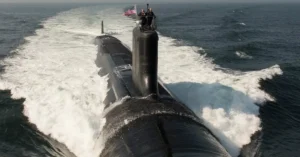When calculating boat speed, many factors come into play, such as the boat’s power, Displacement, and the waterline length. Understanding how to determine the speed of your boat is essential for a safe and enjoyable time on the water. In this article, we’ll explore the critical aspects of calculating boat speed and introduce some helpful tools that make the process easier.
A boat speed calculator can estimate it using formulae for your type of boat. Input critical details about your boat and its power for a quick approximation. Understanding how speed is calculated can also help you sail safely and efficiently.
This article explores the factors in standard boat speed calculations like hull speed and introduces online calculators for easy estimates on the go. Safety and fun on the water start with knowing your boat’s speed.
Boat Speed Basics
As boating enthusiasts, calculating boat speed is crucial to enjoying our time on the water. In this section, we’ll cover the basics of boat speed, including understanding different units of measurement and some essential concepts.
Understanding Boat Speed
Boat speed is generally measured by the distance traveled over time. Various factors can affect the speed of a boat, such as its power, hull shape, and water conditions. The type of boat also plays a role in how fast it can go. To accurately calculate boat speed, it is essential to have a firm grasp of these factors and the appropriate formulas and constants.
Different types of boats will have distinct specifications that determine their potential speed. For example, powerboats can achieve higher rates than sailboats due to the force generated by their engines. Sailboats rely on wind power, and their speed will be influenced by wind speed, angle, and sail configuration.
Units of Measurement
When discussing boat speed, it is vital to understand the different units of measurement. The most common units used for boat speed are:
- Knots (nautical miles per hour): This is the primary unit for measuring boat speed. A knot equals one nautical mile per hour (1.85 kilometers per hour). Knots are used because they offer a more accurate representation of speed in a marine environment.
- Miles per hour (mph): This unit is more commonly used on land but can be converted to nautical miles per hour when needed. One mile per hour is equivalent to 0.87 knots.
- Kilometers per hour (km/h): This unit is used on land and can be converted to nautical miles per hour when necessary. One kilometer per hour is equivalent to 0.54 knots.
Knowing these units and their conversions when calculating boat speeds is essential to ensure accurate calculations and a better understanding of your boat’s performance.
How to Calculate Boat Speed

Calculating boat speed is essential for any boat owner or enthusiast. In this section, we will discuss two methods for determining boat speed: manual calculations and using a boat speed calculator. By understanding these methods, you can optimize your boat’s performance and make informed engine power and design decisions.
Calculating Manual Speed
The primary formula for calculating manual boat speed depends on several factors, such as power, weight, and drag. The most basic equation is Crouch’s formula, which involves the Crouch constant, energy, and Displacement:
S = √(P / D) × C
Where:
- S is the boat’s speed
- P is the power (usually shaft horsepower)
- D is the Displacement (weight of the boat)
- C is the Crouch constant specific for units such as speed in miles per hour and Displacement in pounds.
Another concept to consider is hull speed, which depends on the boat’s waterline length. The formula to calculate hull speed is:
Hull Speed (in knots) = 1.34 * √(Waterline Length in feet)
To determine the required horsepower, you can use a formula like this:
Horsepower = (speed / Crouch constant)² × Displacement
Remember that propeller slip, trim, and buoyancy can influence your boat’s speed.
Using Boat Speed Calculator
Alternatively, you can use a boat speed calculator to estimate your boat’s speed and required horsepower. These programs often incorporate a variety of factors such as power, weight, engine type, and other essential parameters.
To begin using a boat speed calculator, input the necessary data points, such as boat length, weight, and engine power. The calculator will generate accurate results, allowing you to compare different configurations to optimize your boat’s performance.
Following these methods, we can calculate boat speed and make data-driven decisions regarding our vessel’s design and engine power.
Factors Influencing Boat Speed

When it comes to calculating boat speed, several factors can have a significant impact on the outcome. Knowing these factors is essential for boaters and sailors wishing to optimize their water performance. In this section, we’ll cover the influence of weather and sea conditions and the impact of boat weight and engine power on boat speed.
Understanding Weather/Sea Conditions
The weather and sea conditions play a crucial role in boat speed. Wind speed, in particular, can significantly impact a boat’s top speed since sailing relies heavily on harnessing wind power for propulsion. Strong winds can help increase a boat’s speed, while calmer conditions may cause it to slow down. Here, you can find more information on how wind speed and other factors, such as current, affect boat speed.
Navigating through rough waters caused by high waves and strong currents can also significantly affect the boat’s speed. These conditions put more pressure on the hull, thus increasing the fuel consumption and potentially reducing the overall rate. Additionally, accurate navigation skills are essential for boaters, as knowing where currents may be stronger or weaker can help optimize boat speed.
Influence of Boat Weight and Engine Power
Another essential factor for calculating boat speed is the boat’s overall weight. Heavier boats typically require more power to maintain their speed due to the increased drag caused by the greater mass. For each horsepower, you need about 5 to 40 pounds of weight. This means that if a boat weighs more, it will require a more powerful engine to reach higher speeds.
In addition to boat weight, engine power also influences the speed. Powerful engines can propel the boat faster but may consume more fuel. However, balancing energy and fuel consumption is vital, as higher fuel consumption can lead to more significant expenses and a negative environmental impact.
To sum up, when calculating boat speed, it is essential to consider factors such as weather and sea conditions, boat weight, and engine power. Understanding these factors can help boaters and sailors optimize their speed and overall performance, resulting in safer and more enjoyable experiences on the water.
What we think about calculating Boat Speed
We know that Calculating boat speed can be challenging to grasp due to the many factors involved. As our article shows, understanding concepts like thrust, hull design, water flow and more all play a role. However, learning this topic is worthwhile for any boat owner or enthusiast looking to optimize their vessel’s performance.
FAQ – Calculating Boat Speed

This upcoming section will discuss some frequently asked questions about calculating boat speed. Let’s dive right in and expand our knowledge about this essential aspect of boating.
How do you calculate how fast a boat will go?
There are various factors to consider when calculating the speed of a boat, such as its power, Displacement, and hull shape. One way to estimate a boat’s top speed is using the boat speed calculator. This tool utilizes a formula based on the boat’s power and Displacement, along with a constant known as the Crouch constant, which varies depending on the type of boat.
How do you find the actual speed of a boat?
The actual speed of a boat can be measured using onboard instruments like a GPS or a speedometer. These devices provide real-time speed information, allowing you to monitor your progress and make necessary adjustments to optimize your boat’s performance. Remember that wind, water currents, and hull cleanliness can also affect your boat’s actual speed.
How do you find the maximum speed of a boat?
To estimate the maximum (or hull) speed of a boat, you can use the following formula, which is based on the boat’s waterline length:
Hull Speed (in knots) = 1.34 * √ (Waterline Length in feet)
This formula, which estimates the highest speed the boat can achieve under optimal conditions, can be found on the Savvy Calculator website. Remember that various external factors, weather, and water currents, can impact your boat’s maximum performance.
How did sailors calculate their speed?
Historically, sailors couldn’t access modern devices like GPS systems or speedometers to measure speed. Instead, they relied on dead reckoning, which estimated their position based on speed, time, and direction traveled. A standard tool for this purpose was the chip log, a wooden panel attached to a rope with knots tied regularly. By counting the number of knots passing through their hand in a given time (usually 28 seconds), sailors could estimate their speed in “knots.”
We’ve covered the basics of calculating Boat Speed – now it’s your turn. Tell us about your calculating experiences, tips, or boat calculator stories in the comments below!









